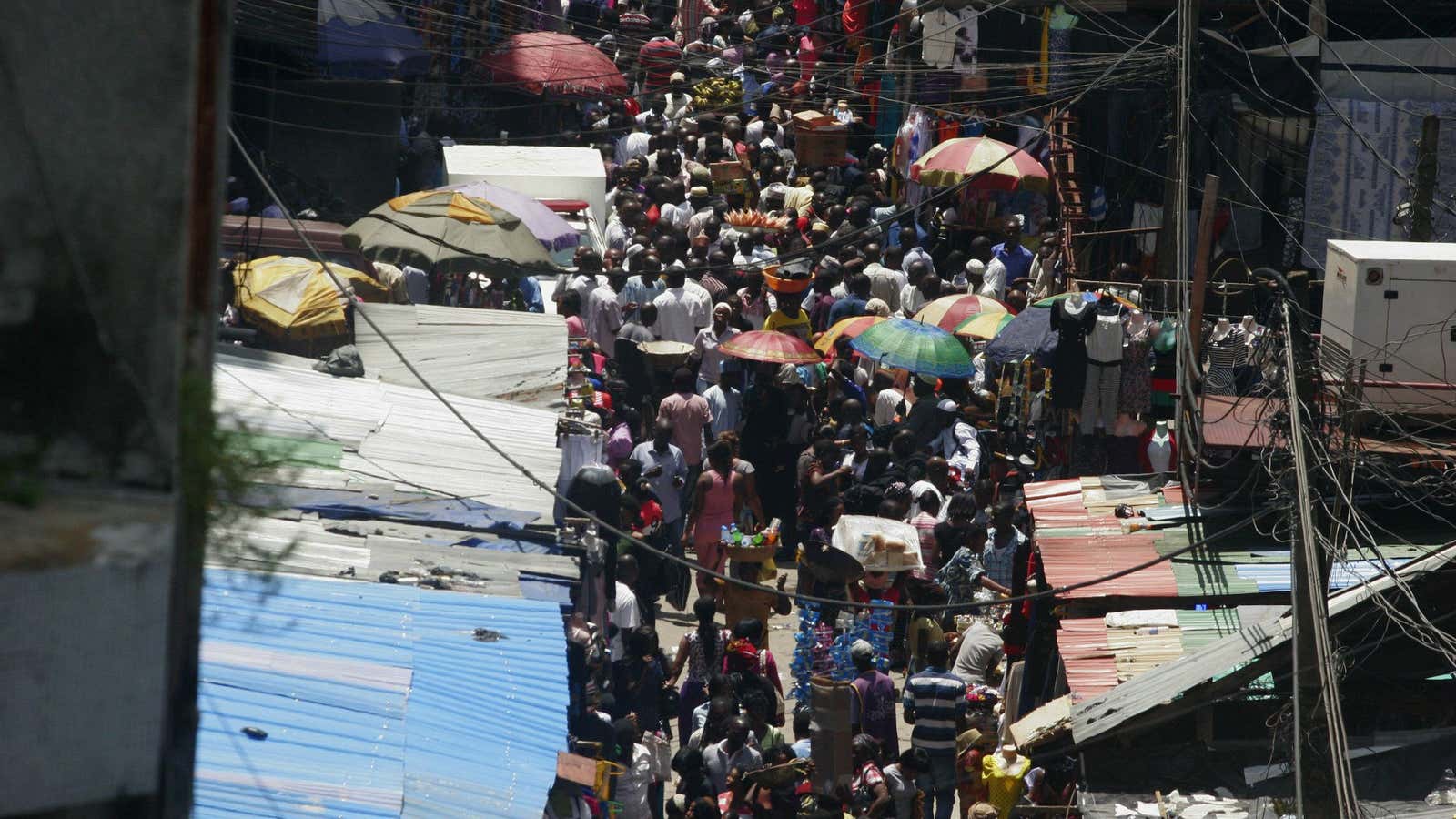As of mid-2015, the world’s population stands at 7.3 billion (pdf), according to a new estimate by the United Nations. Over half of the world lives in Asia and a little under a fifth live in Africa.
But in 35 years, that picture will look radically different. Between now and 2050, over half of the global population growth will take place in Africa, with the continent adding 1.3 billion people, compared with Asia’s 0.9 billion. Thus, by 2050, Africa’s share of the global population will reach 25%, as Asia’s share falls to 54%.
Here’s where most of global growth came from so far this decade:
And this is where the majority of growth will come from in a similar period 30 years from now:
As you can see, Nigeria is expected to top the list. The West African country is expected to surpass the size of the United States by 2050 with its population more than doubling from today to reach almost 400 million.
As a result, Nigeria could enjoy the so-called “demographic dividend,” provided that there are enough jobs to absorb the working-age population and sufficient investment in young people’s development, the UN notes. According to the last poverty survey released in 2012 by the government, some 61% of Nigerians lived on less than a dollar a day in 2010.
Sub-Sahara Africa’s population boom is one of the main reasons for optimism about the continent’s economic growth potential. But that doesn’t come without major challenges. Forty-eight countries classified by the UN as “least developed countries” are expected to double in population size by 2050; 33 countries, most of them falling within this category, will triple in size by 2100. The UN details a long list of challenges governments will face as populations expand:
The concentration of population growth in the poorest countries will make it harder for those governments to eradicate poverty and inequality, combat hunger and malnutrition, expand education enrollment and health systems… and implement other elements of a sustainable development agenda to ensure that no-one is left behind.
